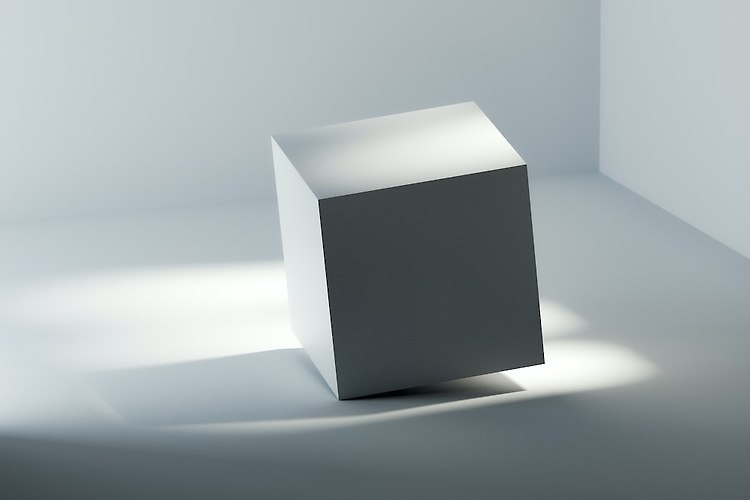

The Delian problem, also known as the problem of doubling the cube, was a famous mathematical problem that puzzled ancient Greek mathematicians for over two centuries. The problem, which was first posed on the island of Delos, challenged mathematicians to find a way to construct a cube with twice the volume of a given cube, using only a straightedge and compass. Despite the efforts of some of the greatest minds in ancient Greece, the problem remained unsolved for over two centuries, earning it a reputation as one of the most challenging and intriguing problems in the history of mathematics.
The Origins of the Delian Problem
The Delian problem is said to have originated on the island of Delos, where the ancient Greeks built a temple dedicated to the god Apollo. According to legend, the people of Delos wanted to build a statue of Apollo that was twice as large as an existing statue of the god. However, they were unable to do so because they could not figure out how to construct a cube with twice the volume of a given cube, using only a straightedge and compass.
The problem was later taken up by the Pythagorean philosopher, Hippocrates of Chios, who is credited with being the first person to attempt a solution. Despite his efforts, Hippocrates was unable to find a solution, and the problem was passed on to other mathematicians, including the famous mathematicians of ancient Greece such as Plato and Eudoxus.
The Mathematical Challenges of the Delian Problem
The Delian problem posed a number of mathematical challenges that made it particularly difficult to solve. One of the main challenges was that it required the construction of a cube with twice the volume of a given cube, using only a straightedge and compass. This meant that mathematicians could not use any measuring instruments, such as rulers or protractors, and had to rely solely on their mathematical knowledge and ingenuity.
Another challenge was that the problem required the use of geometric constructions, which were not well understood at the time. In particular, the problem required the use of the so-called "irrational numbers," which are numbers that cannot be expressed as a ratio of two integers. This made the problem even more challenging, as it required mathematicians to have a deep understanding of the properties of numbers and geometric shapes.
The Attempts to Solve the Delian Problem
Despite the challenges of the Delian problem, many mathematicians of ancient Greece attempted to find a solution. One of the first solutions was proposed by the famous mathematician, Plato, who suggested that the problem could be solved by constructing a line segment with a certain length, and then using it to construct a cube with twice the volume of a given cube. However, Plato's solution was not based on any rigorous mathematical proof, and it was later shown to be incorrect.
Another famous attempt to solve the problem was made by the mathematician, Eudoxus of Cnidus, who proposed a solution based on the use of geometric constructions. Eudoxus' solution was based on the idea of constructing a line segment with a certain length, and then using it to construct a cube with twice the volume of a given cube. However, Eudoxus' solution was also later shown to be incorrect.
The Legacy of the Delian Problem
Despite the fact that the Delian problem remained unsolved for over two centuries, it had a significant impact on the development of mathematics in ancient Greece. The problem inspired mathematicians to develop new mathematical concepts and techniques, such as the use of geometric constructions and the concept of irrational numbers.
In addition, the Delian problem also helped to pave the way for the development of calculus, which is a branch of mathematics that deals with the study of change and motion. The problem of doubling the cube required mathematicians to think about how to calculate rates of change and how to measure the properties of geometric shapes, which laid the foundation for the development of calculus.
The Delian problem also had an impact on the development of mathematics in other cultures. For example, in ancient China, the problem of doubling the cube was known as the "Delian-Pythagorean problem" and was considered to be one of the most challenging mathematical problems of the time.
Despite the fact that the Delian problem was never officially solved, some mathematicians have proposed solutions in modern times using algebraic methods and complex numbers. The problem continues to be a topic of interest in the field of mathematics, and is still studied by mathematicians today.
Proof of Delian problem
Although the problem was never officially solved in ancient times, there have been several proposed solutions using modern mathematical methods.
One proposed solution is to use algebraic methods to solve the problem. For example, if we let $x$ represent the length of the edge of the smaller cube, then we can use the formula for the volume of a cube, $V = x^3$, to find that the volume of the larger cube is $V = 2x^3$. We can then use algebraic manipulation to solve for $x$ and find that the length of the edge of the larger cube is $x\sqrt[3]{2}$.
Another proposed solution is to use complex numbers to solve the problem. We can use the polar form of a complex number, $z = r(\cos \theta + i\sin \theta)$, to represent the length of the edge of the smaller cube. Using this method, we can find that the length of the edge of the larger cube is $\sqrt[3]{2}z$.
It is important to note that these solutions were not available to the ancient mathematicians, who were limited to the use of only straightedge and compass. However, these solutions demonstrate that the Delian problem can be solved using modern mathematical methods.
Summary
The Delian problem, also known as the problem of doubling the cube, was a famous mathematical problem that puzzled ancient Greek mathematicians for over two centuries. The problem, which was first posed on the island of Delos, challenged mathematicians to find a way to construct a cube with twice the volume of a given cube, using only a straightedge and compass. Despite the efforts of some of the greatest minds in ancient Greece, the problem remained unsolved for over two centuries, earning it a reputation as one of the most challenging and intriguing problems in the history of mathematics.

You know what's cooler than magic? Math.
포스팅이 좋았다면 "좋아요❤️" 또는 "구독👍🏻" 해주세요!



